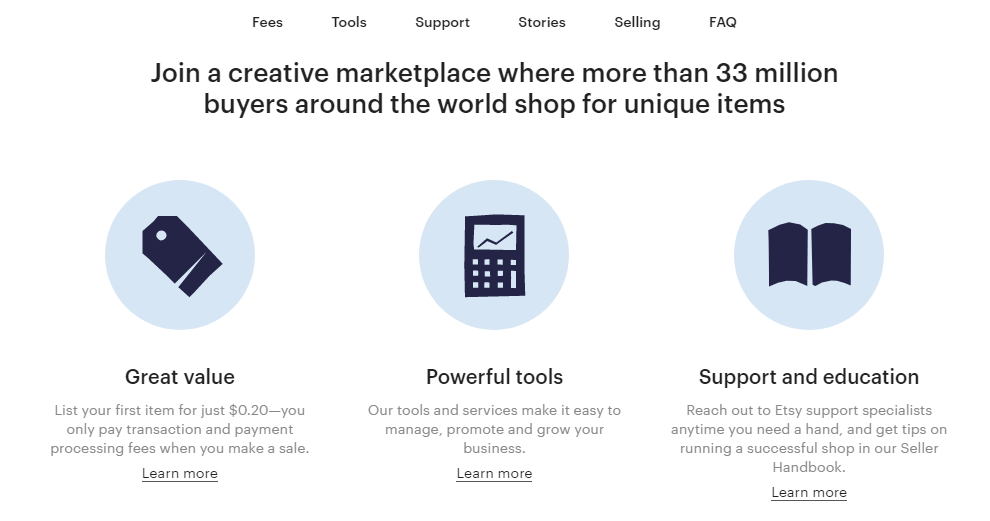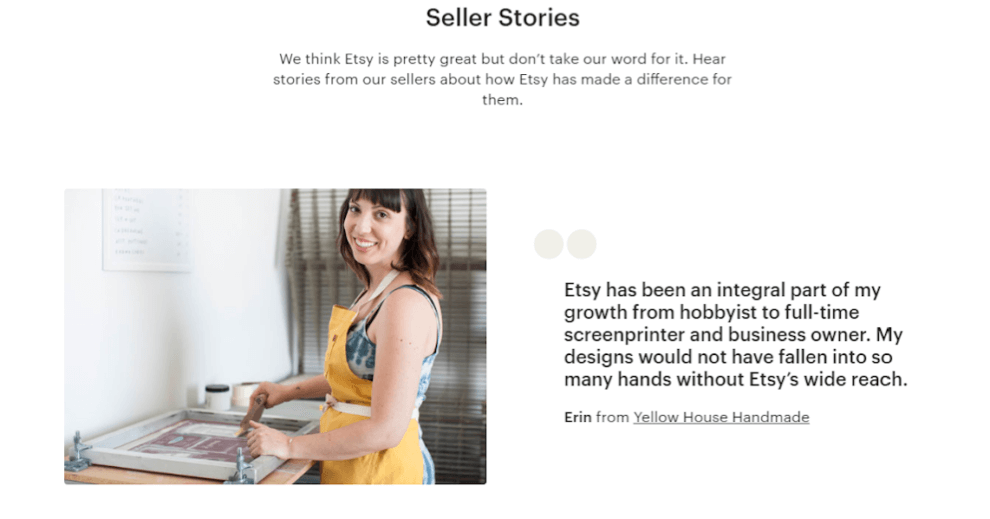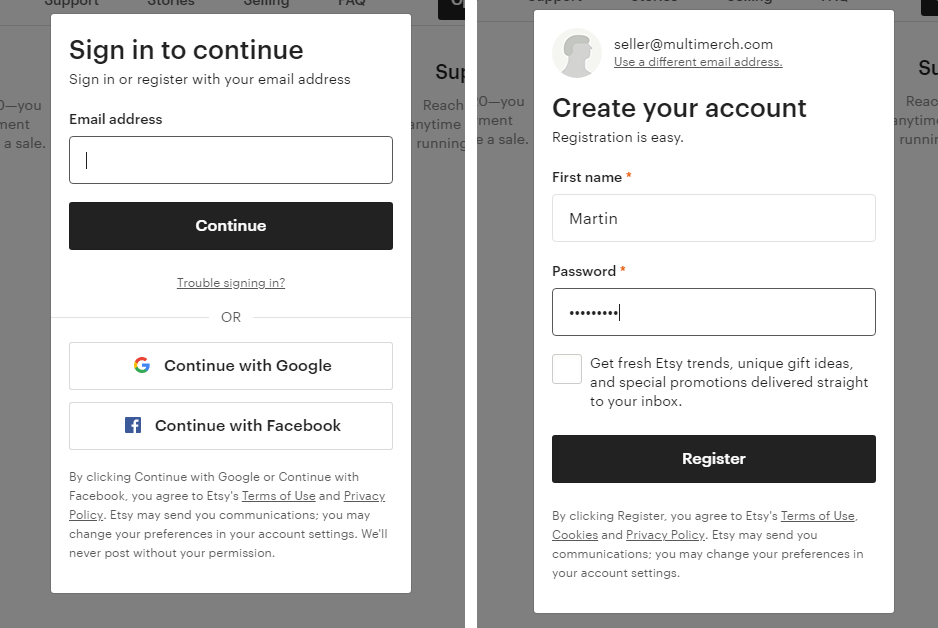Contents
This is a guest blog post by Martin Boss, Founder of MultiMerch Systems.
Starting a regular, run-of-the-mill online store is a piece of cake nowadays. Get a Shopify account, upload a few products, and sell and dispatch them – and you’re done.
Two-sided marketplace platforms with vendors are different beasts. Not only do you need more complex software to run a marketplace, but the operations are also more difficult as well when you’re dealing with two sides at once.
Here are some of the marketplace operations you’ll have to master to start a successful online marketplace business.

Setting up and maintaining your marketplace platform
First and foremost, a regular e-commerce platform like Shopify won’t cut it if you want to run a marketplace.
So, you will be looking for multi-vendor software (or two-sided marketplace solutions) to power your new marketplace.
There are three main types of marketplace software:
- SaaS or cloud-based platforms
- self-hosted marketplace software
- multi-vendor e-commerce extensions
Cloud marketplace solutions like Sharetribe, Arcadier, and Marketplacer are the easiest to get started with and require little to no technical knowledge. In most cases, they also offer free trials so you can play with the platform to ensure the solution fits your requirements.
Self-hosted marketplace software like MultiMerch or CS-Cart gives you much more customization and modification possibilities since you can access the source code and own it outright. However, you will need at least some technical skills to build a marketplace platform using self-hosted software.
Finally, you can take a regular CMS like WordPress, Squarespace, or OpenCart and explore the various options available. Most modern CMS vendors today have plenty of options for you as a starter. Here are some great options for e-commerce to check out:
- Squarespace e-commerce with pretty much all you need to get at least started.
- WordPress Elementor for someone who knows their way around a website a bit.
- Magento was acquired by Adobe and is well worth checking out as well
Depending on your software type, setting up a new marketplace platform will take you anywhere from a few hours to a few months (I’ve seen years, but I don’t recommend it).
Finding, onboarding, and managing vendors
It’s not a multi-vendor marketplace if you don’t have any vendors. So, you will need to find vendors and convince them to join your platform.
We recommend doing market research and lining up at least a few vendors early on – even before you start building the platform. Not only will this allow you to validate your idea and generate a little awareness, but it will also create a pool of early adopters willing to test your platform and provide feedback.
Here are a few ideas for finding your initial vendors:
- Join Facebook groups for store owners
- Reach out to Etsy and Amazon sellers directly or via communities
- Create a few paid Google, Facebook, and Instagram ads
- Go door-to-door the old-school way if you’re starting a local marketplace
This article by Shopify describes the process of finding manufacturers and wholesale suppliers. You’ll find it most helpful for a B2B marketplace platform, but the process will be similar if you build a B2C marketplace.
Now you will need to convince your vendors to join your platform, especially when you’re just starting out. What’s in it for them to join a marketplace with barely any users? Here, you will need a landing page or a slide deck showcasing your value proposition and why it makes sense for a vendor to join you. Consider offering an incentive or two to your early adopters, such as lower (or waived) selling fees or a free onboarding service.
To reduce friction for new vendors, ensure your sign-up flow is as simple and straightforward as possible. Simplify your vendor registration forms – don’t ask for too many details immediately if you can do it later after the vendor signs up. Describe the process of signing up and be available to new vendors for support.
Etsy makes the onboarding process so easy

First, they really go out of their way to answer all possible questions a new vendor may have on its “Sell on Etsy” landing page. This includes a few sections covering the selling features Etsy offers, a clear overview of the fee structure, a FAQ section, and even a few highlights of existing sellers.

To sign up as an Etsy seller, you first need to create an Etsy account, then set up your shop. Creating an account is simple enough – you’ll only need your first name, email address and password:

Then, you’ll go through 5 simple steps of setting up your store – from specifying your regional settings and naming your store to uploading your first items and filling out the payment details.

Note that Etsy will require you to upload at least one item before you can complete your setup process. While you’ll want to avoid this extra step to reduce friction for your new vendors when you’re just starting out, this helps Etsy weed out dummy signups and only accept sellers who are serious about opening their stores.
Creating and managing the product catalog
Now it’s time for your vendors to start listing their products on your marketplace.
There are two common ways your marketplace can tie products to individual vendors:
- Etsy-style, where every product is unique and belongs to one vendor only
- Amazon-style, where multiple vendors can sell a single product at different prices
Both have benefits and drawbacks, but you’ll find that most ready-made marketplace solutions out there will offer Etsy-style listings due to simpler system architecture.
In any case, you’ll want to keep the process of listing new products simple – your vendors are busy people. This means simplifying your product listing forms, asking for the crucial information only, and tailoring them to the product categories, you plan to carry.
Consider offering your vendors a way to upload products in bulk or import their catalog from a third-party marketplace platform. If they already sell on Amazon, they’ll appreciate a quick way of syncing their existing catalog with your marketplace instead of having to list all products manually. Do it for them as an onboarding service.
Decide whether or not you want to moderate products published by your vendors to keep your product catalog clean (the answer is probably yes, especially for a larger marketplace). If you do, make sure you have a moderation system in place to prevent delays. The last thing you want is for your vendors to wait a week to get their products published because you’re moderating thousands of products by hand.
Processing payments and managing orders
As your marketplace starts getting traction, you will be processing payments and helping your vendors deal with customer orders.
There are two common ways your marketplace can process customer order payments:
- Aggregated: Where your platform collects buyers’ payments and later redistributes them to vendors via payouts
- Split or parallel: Where the payment is instantly split at checkout and distributed between the vendors (and your platform, if you charge a selling fee) by the payment processor
Aggregated payments make single checkout possible and allow you to own the transaction, but place an extra burden on tracking your sellers’ finances and making regular payouts on your platform. And with the payment industry becoming increasingly more regulated, payment aggregation as a marketplace payment flow will only get more complex.
Split payment processing eliminates these issues and shifts the liability and compliance burden from your business to the payment processing company. The biggest remaining problems of parallel payment processing are implementation complexity and the lack of marketplace processor availability.
However, the trend is changing. At MultiMerch, we’ve recently discovered at least 26 different marketplace payment solutions that cater to two-sided platforms.
Now, while you won’t be processing orders yourself, your vendors will need a way to receive, process, and dispatch products to their customers. Since the shipping cost and speed directly affect conversion rates, the sooner your vendor gets notified about the new order, the sooner they can dispatch it and keep the customer happy and willing to purchase again.
To keep the customer informed about the status of their order, offer your vendors a way to specify the tracking number after they’ve dispatched the order. Consider connecting your order management system to a third-party shipping service like ShipStation or AfterShip to let the buyer track the order without leaving your marketplace and get notified about the status changes automatically.
Handling customer and vendor relations
Now, simply attracting new vendors and buyers and hoping it will all work out by itself won’t do in most cases – you will need to actively keep your users happy, loyal, and using your platform regularly. As your platform grows, you will support your users, answer their questions, and help them solve various problems regularly. Do have a plan for that in place.
These are just a few of the challenges you’ll be dealing with when running your platform:
- Helping vendors sign up, customize their stores, and list products
- Resolving technical issues and software glitches in the users’ report
- Mediating disputes between the vendor and the buyer
- Enforcing the rules and moderating user-generated content
To reduce your involvement, you’ll want to allow the buyer to communicate with the vendor directly and ask questions about the products and the orders before and after the sale. The more options to reach out you offer, the more likely the issue is to be resolved without your intervention.
Delays, questions, and disputes are inevitable, so you’ll need a plan (and a system) to handle them. As you grow, you may consider starting a user community and creating your own protection programs for buyers and sellers, like eBay’s Money Back Guarantee or Airbnb’s Host Protection Insurance.
Growing your marketplace
“If you build it, they will come” sounds great in theory, but will probably not happen in practice. You’ll get some traction due to the nature of two-sided platforms but will still need to promote your platform, especially in the early stages actively.
The unique challenge online marketplace owners face is growing both the supply and the demand side at once – getting vendors while you have zero customers and finding buyers with only a small product catalog.
Earlier, I outlined some ways to get those first few vendors to join your platform. Regarding customer acquisition and growth, paid, social and organic search will be your main channels and other business development initiatives.
Set up a presence on Instagram and Facebook. While organic social media reach is decreasing, it’s still an important channel for an e-commerce brand. Now, have a paid promotion strategy for your marketplace in place to attract new users and create brand awareness. The more content is created daily, the more value you’ll get from paid marketing campaigns. Set aside an initial paid advertising budget and test a few different channels to see what works best. Instagram is a great channel for highly visual ads, for example.
Search engine optimization will be crucial for your marketplace in the long run since over 50% of trackable traffic, on average, still comes from organic search. To minimize the amount of SEO work you’ll need, ensure your marketplace platform is built with search engines in mind. This means search engine-friendly, optimized, and shareable product listings, seller stores, and the rest of your marketplace. Keep in mind that most sellers won’t bother optimizing every listing (if they’ve heard about SEO at all), so make it a no-brainer for them and automate as much as possible.
And SEO isn’t only about products – there’s way more user-generated content on a typical marketplace platform:
- Product and vendor reviews
- Public questions and answers
- Vendor stories, blogs, and other things
This is great for you, the marketplace owner. Encourage your users to create great content on your platform and feature it prominently for better SEO and social proof.
And that is how you start and manage an online marketplace platform in a nutshell. If it sounds difficult, it’s because it is. I learned at MultiMerch that marketplace businesses are more challenging than regular online stores but also so much more rewarding.
For a more in-depth guide on starting a two-sided marketplace, check out my Beginner’s Guide to Starting an Online Marketplace Business.

Martin Boss – Founder at MultiMerch Systems
Martin Boss is the founder of MultiMerch Systems and a fan of marketplace e-commerce. At MultiMerch, he helps companies build and grow successful online marketplace businesses. Reach out to him on LinkedIn and Twitter.




